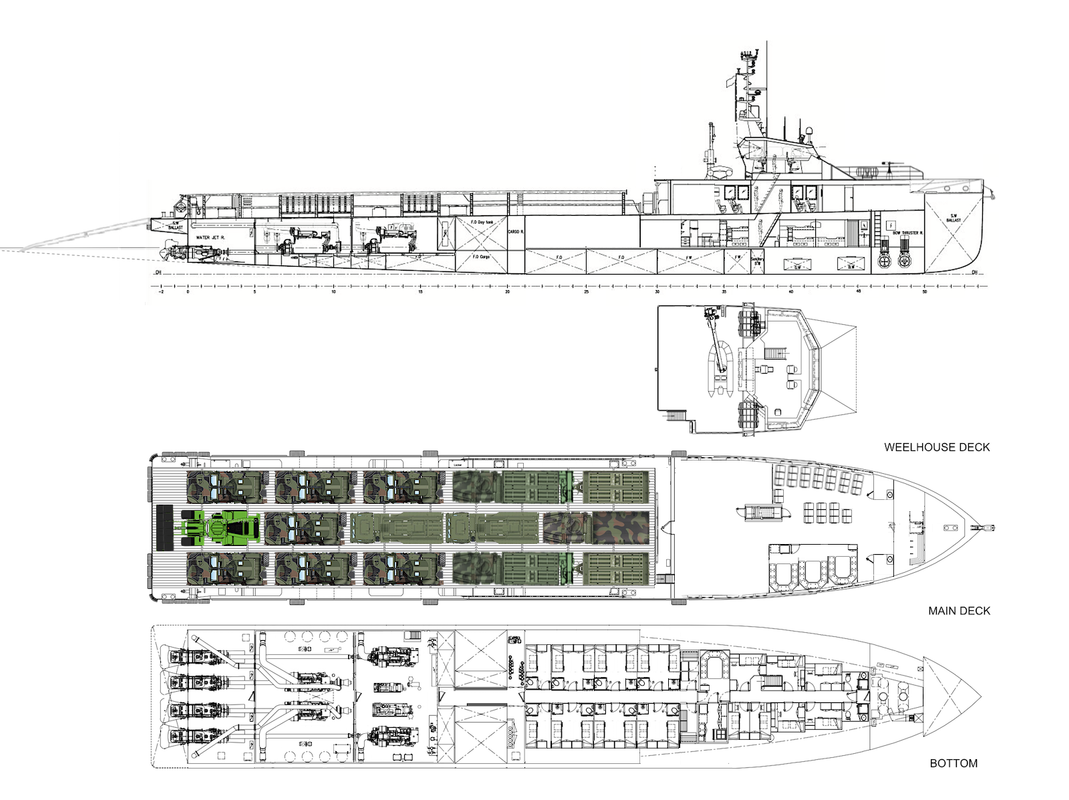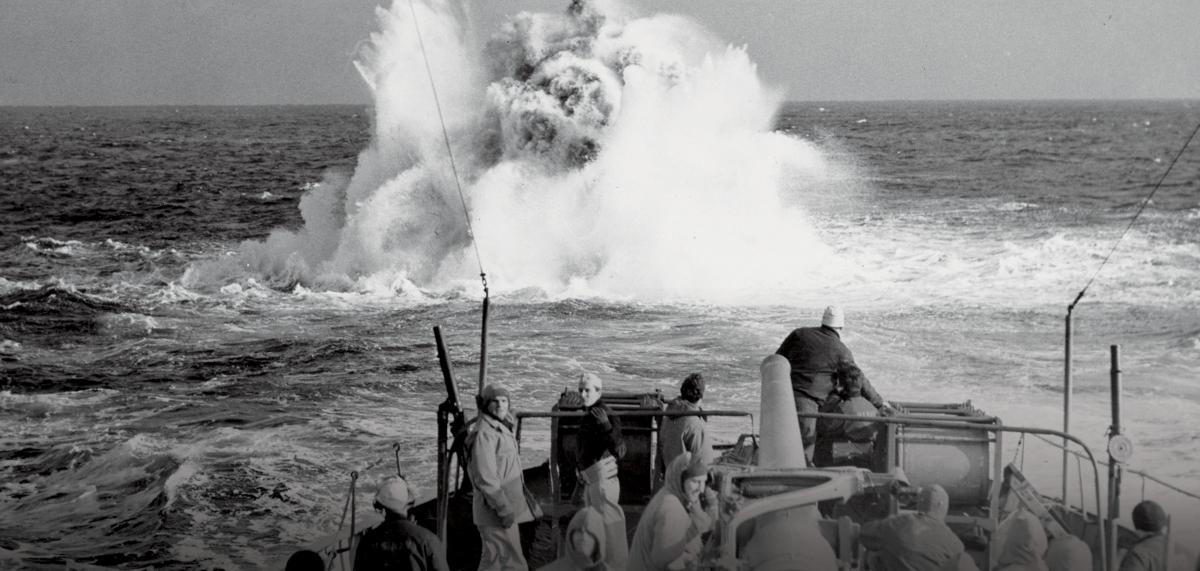For what it's worth, I've been noodling on stern landing ships based on FSVs to solve for the speed issue.Yes speed is the H260's achilles heel. They are short, fat and dumpy and probably underpowered. Beaching hull designs are not designed for racing.
I'm not sure however that the fast supply vessel form is the long term solution either though. The FSV trades payload and range for speed as they are designed to get small high value equipment out to rigs within a few hours.
Extrapolating from a real FSV design, here is my take on a ~600 tonne, 60-65 meter long fast landing ship for a reinforced platoon of 60 soldiers (90-100 pax overload) and 12-15 vehicles (~200 tons cargo).
I admit it's more of a thought exercise, based on conversations with a naval architect who is probably one of the top landing craft experts in the world. He has worked on smaller LCM-sized stern landing concepts and his take was that most naval operators might be a little wary of such a large stern landing vessel, so probably a bridge too far...

In terms of design details, I selected a waterjet powered FSV with a reduced draft aft (~1m), which is more compatible with stern landing. Lengthened the hull by 9m (from 50.5m to 59.5m waterline) to increase cargo deck area and accommodation space. Top speed would be 30-34 knots (light loaded), 20-27 knots full load (depending on engine selection - the actual FSV parent design has 4x 1,350kW or 4x 2,000kW), with an operating radius of ~1,500nm at 18-20kts (Darwin <-> Borneo or southern Philippines). Lightship weight of ~280 tons and deadweight of ~320 tons (200 tons cargo + 120 tons fuel & water). Crew of 12-14.
Showing it with a sample load of 7 utility vehicles (Hawkei or Bushmaster), 4 trucks (e.g. Himars) and an engineering vehicle for beach access. Total 105 lane meters, 200 tons, ~60 pax in vehicles with 90-100 total pax possible (overload).
Last edited:








